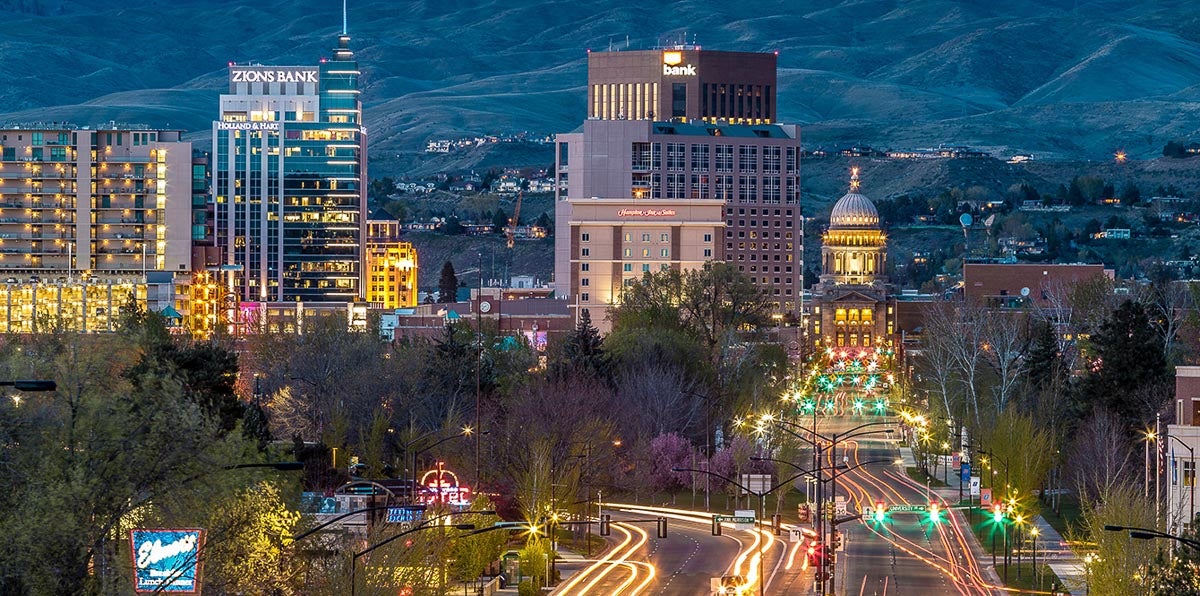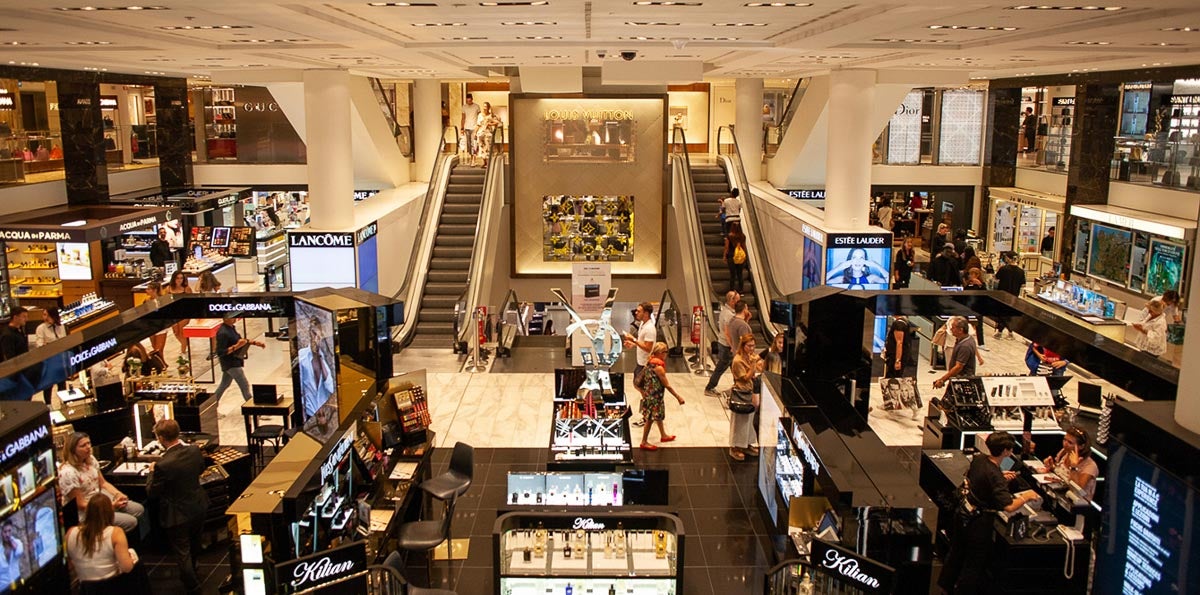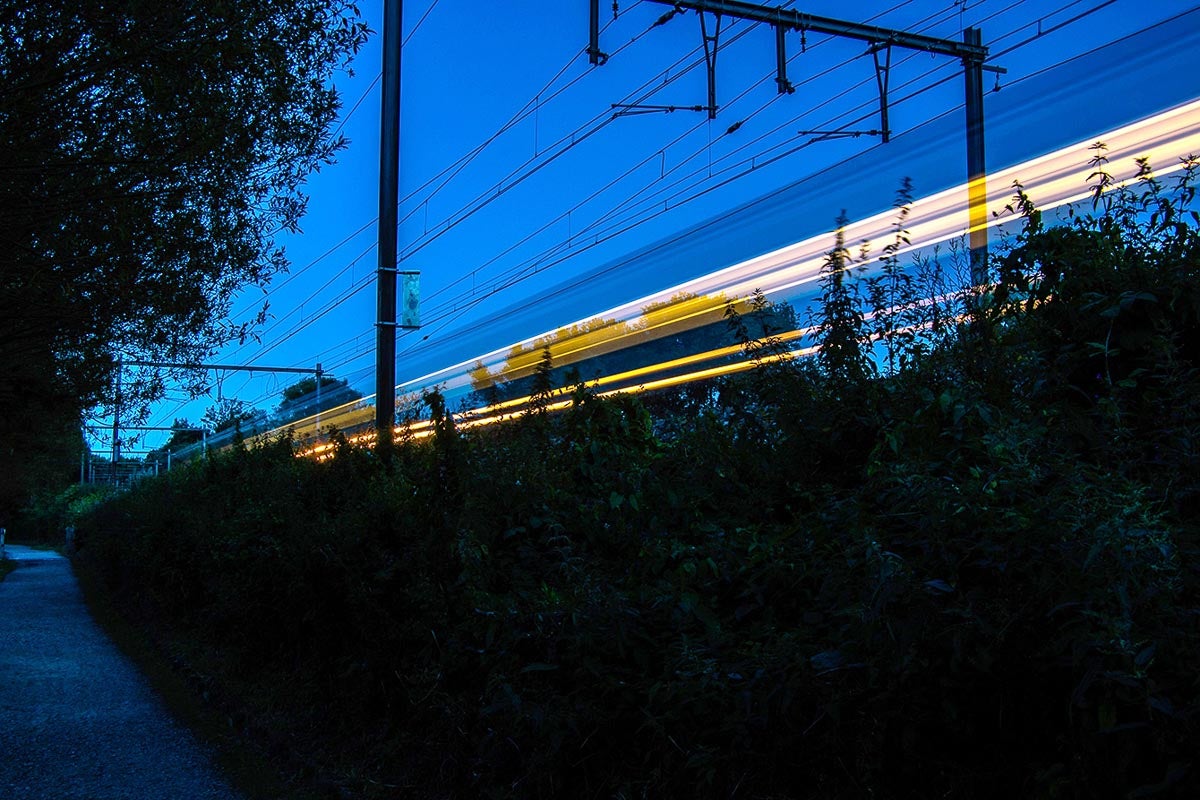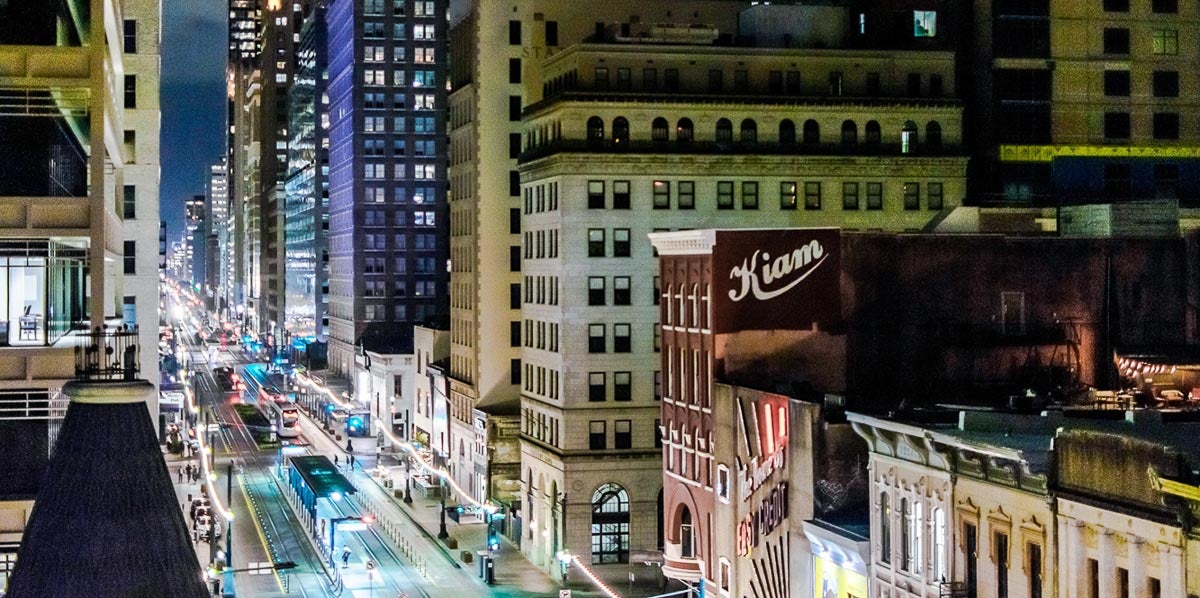A year ago, cities were in, bustling with a prosperity they hadn’t seen in many years. The 2020s were shaping up to be yet another “decade of the city,” with tech companies concentrated in big, dense, expensive cities like New York and San Francisco, and urban neighborhoods of color everywhere concerned about gentrification.
Then came COVID.
A year after the lockdown, cities are still struggling to find their place in this new world. Early fears that urban density per se helped spread COVID-19 led to cities emptying out. And obviously office-based cities were hit especially hard. Midtown Manhattan, the nation’s densest office neighborhood, remains a ghost town, as do many downtowns throughout the country. San Francisco hasn’t been cheaper in many years. A lot of the restaurants and bars that serve as the lifeblood of cities remain closed or are open only for outdoor dining. Millions of public transit riders remain reluctant to set foot on a bus or a train.
As part of the Urban Edge’s ongoing “COVID-19 and Cities” series, the Kinder Institute for Urban Research is examining the urban landscape a year after the pandemic began. This is the first of many posts looking back on the past year and ahead to what will be different in the years to come.
Yet, if we know anything from history about cities, it’s that they are resilient — that they often bounce back quickly from devastating blows, ranging from pandemics to wars to recessions. Cholera-ridden London appeared to be teetering on the edge of disaster in the 1850s, yet, once the cholera problem was solved, the population doubled. After the Spanish flu pandemic a century ago, cities were livelier than ever in “The Roaring ‘20s.” European cities devastated by bombing during World War II were strong and prosperous by the 1960s. And, more recently, there was the revival of American cities, which emerged after decades of struggle with suburban flight and devastation related to freeway construction.
But, coming out of the pandemic, cities will definitely be different more than ever before. So, here are six trends and predictions that, taken together, should provide a useful picture of how cities will look in the post-pandemic world of the 2020s.
1. Big, expensive cities are out. Smaller, cheaper cities are in.
From the beginning of the pandemic, pundits have been predicting that COVID-19 will mean the end of cities, especially given fears that urban density fueled the virus’ spread. But the reality is a lot more nuanced.
So far, we’ve seen two big losers: New York and San Francisco. But this has more to do with expense than with density. These are the two most expensive cities in the United States — meaning their residents live in smaller spaces and depend on bars, restaurants, parks and other urban amenities to navigate their daily life. With the advent of working — and schooling — from home and a shutdown of retail establishments and civic venues, these cities have proven ill-suited for the pandemic. Those who can afford to leave, temporarily or permanently, have done so.
But that doesn’t mean a downturn in all cities. Indeed, population loss in San Francisco and New York has meant population gains elsewhere — mostly in their suburbs, but also in smaller, cheaper cities. San Francisco residents have spread out throughout the Intermountain West, leading to a boom in cities like Bend, Oregon, and Boise. And New York residents have increasingly looked far Upstate, to long-depressed cities like Buffalo and Syracuse, which are seeing a revival. Texas cities are benefitting too, as they are less expensive and perceived to be places of opportunity.

San Francisco residents have left the city and relocated throughout the Intermountain West, leading to a boom in cities like Boise.
Photo by Alden Skeie / Unsplash
2. Owning is in and renting is out
No one could have predicted this one, but the fact of the matter is that home prices throughout the nation are going through the roof, while rents are falling through the floor — especially in those big, expensive cities like New York and San Francisco.
All those people who can afford bigger houses are buying them in order to work at home — and that, along with the longstanding national trend of low housing production, has led to alarmingly high home prices. Meanwhile, rents in places like San Francisco, New York and Los Angeles are dropping fast — as much as 25%.
But this strange real estate market holds within it the seeds of an urban revival. Attractive suburbs and smaller cities like Boise are becoming less and less affordable — and therefore less and less appealing in the long run to people looking to buy houses. And as cities open up again, rents are bottoming out — they finally stabilized in San Francisco in January and are headed up again. Especially, as people in their 20s emerge from their bedrooms at their parents’ house, it seems likely that they will return to renter-heavy urban neighborhoods.
3. Downtowns as we know them are dead — but they will come back in a different form
Downtowns have been ghost towns, temporarily, at least. Along with more suburban-style “job centers” — such as The Galleria in Houston and Century City in Los Angeles — they have suffered from the fact that most office workers are staying home, meaning the retail businesses those workers support have struggled or shut down.
Downtowns will come back. But they’ll be different than they were before.
For the past 30 or 40 years, most downtowns — especially traditional downtowns such as Houston’s — have lived off of office space and office workers. Primarily, they’ve been locations for office buildings and associated retail. Even before COVID-19, that was changing — and coming out of the pandemic, it will change a lot more.
Real estate experts are predicting that most office workers won’t come back full-time — perhaps only three or four days a week. That’s likely to lead to a 10–20% drop in demand for office space. At the same time, before the pandemic, we did see a long-term trend of downtown living, as people who wanted to live the urban lifestyle flocked to cities. The decline in office demand is likely to accelerate the trend of converting older office buildings to residential use — and with increasing demand, we are likely to see more downtown residents, thus diversifying the activity in formerly office-heavy business districts.
At the same time, the nature of office work will change dramatically, and this will change how downtowns and business districts such The Galleria function. People — and their employers — have learned that they can sit at home and type on their computers and be productive. As one business executive told me the other day, post-pandemic, if you make people come to the office, you’d better make it worth their while by emphasizing meetings, mentoring, strengthening the organizational culture and adding value through informal conversations. This will lead to a further downtown transformation that will emphasize meeting places over office spaces.

In the 1990s, there were 3,000 regional malls in the United States. Experts in retail real estate have predicted that, in the years following the pandemic, there will be only 150-200 left.
Photo source: Pexels
4. Retail is over – but restaurants and bars are not
Other than tourism, perhaps no industry has been hit harder — and missed more — than food and beverage. Restaurants have struggled to survive with take-out, outdoor dining and limited seating. In many parts of the country, bars have been shut down altogether. And there’s no question that many food and drink establishments — perhaps as many as 30–40% — will go out of business permanently. (The website Eater maintains a running list — which is very long — of restaurants that have closed in New York and elsewhere.)
But just because your favorite bar is shutting down doesn’t mean that the bar business is done. There’s little question that people are dying to be together in bars and restaurants again. (Indeed, at least here in Houston, it’s obvious that demand has been so great that restaurants and bars have been bending the shutdown rules to accommodate people.)
So, in the new Roaring ’20s, it seems likely that restaurants and bars will come roaring back. It will take a while for chefs and owners to work through bankruptcies and landlords to take their losses, but in a couple of years this sector will be stronger than ever — and bringing even more liveliness to cities and neighborhoods than before.
Retail stores are another story.
Before COVID, there was a long, slow slide in what is commonly known as “brick-and-mortar” retail, as more and more stores closed and more and more retail business moved online. The pandemic accelerated this trend, and there is no reason to believe that this will reverse when things open up. The regional mall business will be especially hard-hit. In the ’90s, when they were at their peak, there were 3,000 regional malls in the United States. One expert in retail real estate recently predicted that when the dust settles from COVID, there will be only 150-200 left. There will be a lot of empty retail spaces in strip centers as well.
It will take years to figure out how to fill in these empty spaces. Many are likely to be converted to personal-care businesses. Others may become bars and restaurants — though adding the plumbing and kitchen facilities is expensive. It is most likely that the stores will be torn down and replaced with housing. Regional malls are usually large pieces of land located in affluent suburbs — an attractive opportunity for residential builders.
5. Public transit will come back – but it may be smaller and different
The story of public transit during the pandemic is both sad and surprising — and the future is very unclear. Nothing defines a true urban life more than the ability to travel without a car — by walking, biking or taking public transit. But during the pandemic, nobody who had a choice got on a bus or a train. This has hollowed out public transit ridership across the country — and the drop in ridership, along with a decrease in other critical revenue sources for transit, such as sales tax, has led to predictions of a death spiral for public transit throughout the country.
At the same time, however, for a subset of riders who continued working during the pandemic, public transit has become more important than ever. Many essential workers are paid low wages and, therefore, can’t afford a car for commuting — but they have had to continue working during the pandemic. At the same time, bus service has cut been across the country. So essential workers — still poorly paid but more valued and important than ever — have had to navigate an increasingly hostile public transit environment to get to work.
The Biden COVID-19 relief package provides $30 billion for public transit, so it may well be that service can be restored in many places. But it does seem likely that ridership and service will permanently shrink. It may be that many cities — especially suburbs — will follow the lead of places like Arlington, Texas, which, instead of creating a bus system, has worked with ride-share companies to provide alternatives.

6. “Place amenities” matter more than ever – even in Zoomtowns and Zoomburbs
Counterintuitively, this may be the biggest lesson from the pandemic: As people are untethered from their commutes, they are looking for something more than just bigger houses and bigger yards. Wherever they go, they are still looking for those “place amenities” — parks, restaurants, walkability, charm — that they found in cities.
That’s why Zoomtowns and Zoomburbs have emerged mostly in high-amenity places.
In New York, home prices in the lovely Hudson Valley north of the city have shot up dramatically — it’s essentially become a Zoomburb, where people can live a high-amenity life while traveling to the city infrequently, rather than daily.
Meanwhile, pretty towns in the Intermountain West have become the most important Zoomtowns, as tech workers have emptied out of the Bay Area in search of a tricky combination of lower prices, wide-open spaces and urban amenities. (And they’re finding it: Bend, Oregon, where many Californians are flocking right now, has more breweries per capita than any other city in the country.)
Meanwhile, second-tier cities are thriving because of refugees from New York and San Francisco — but high-amenity second-tier cities are winning the war. The biggest winners appear to be Austin, Nashville and Miami, all of which are located in low-tax states in the Sun Belt — but also have lively urban amenities and especially hot music scenes. Austin may not become the next Silicon Valley, but Silicon Valley is drawn there because many of the Bay Area’s place amenities can be replicated there.
So, in short, the city is not dead because of COVID-19. As has often been the case in the past, the city is likely to come roaring back after the pandemic is over, becoming livelier and more prosperous than ever before. But, it will be different: Not as concentrated, more varied and more balanced. And the urban amenities that have characterized big cities up to now are likely to spread out to smaller cities and suburbs across the land as urban refugees find new places to live.

